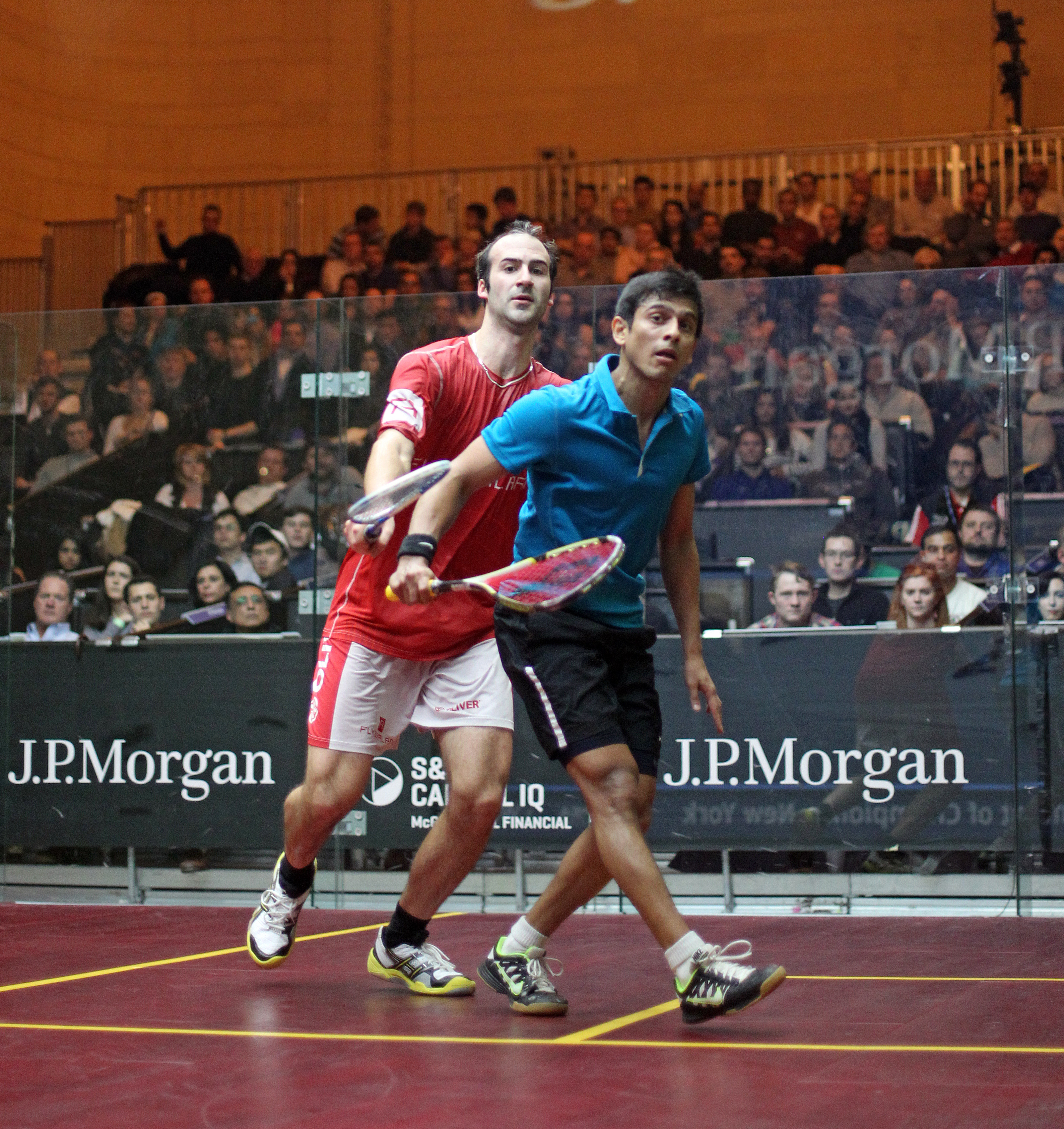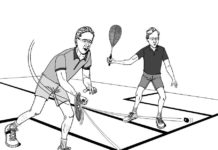
By Barry Faguy
HEY REF! I made a good drop shot (admittedly not a winner) from the T because my opponent’s previous poor shot set me up there—and then my opponent came up against me while heading directly to the ball. Maybe she could have got the shot, but I figure it was her problem and she should have been forced to go around me. Didn’t she create her own interference?
The answer is no. This way of thinking is common and demonstrates what is a natural instinct for many players (and referees!). The latest edition of the rules (2014), unfortunately, contains no guidelines, so I can only refer to the ‘recently-dispatched’ guidelines from the previous edition. It made clear the distinction between the concepts of ‘created interference’ and ‘position of advantage’. Yes, a player in the position of advantage will naturally want to see some extra burden (like having to go around) placed on the opponent for having messed up the previous shot. Nonetheless, how the situation came about (her poor shot) is not a consideration. She is still allowed direct access. The reason the rules are this way is that, to allow otherwise would absolve the now interfering player (you) from needing to clear—thus opening up a never-ending slippery slope for these situations. So we need but apply the usual considerations, which are: were it not for the interference, would the striker have been able to reach the ball, and was she making effort to do so?
HEY REF! I’d never seen this before, but my opponent was given a let for what was called ‘fair view’. Is that legitimate?
Interference to the striker’s view is the most commonly- occurring form of interference—but the one least subject to requests for lets. Next time you play, try to pay attention to it and you’ll see (pun intended) how common it is. It happens constantly, but mostly unnoticed—and in almost all cases, to a fleeting degree. It’s typically so darned fast that it has no significant effect for the striker. If a request for let is indeed made for it, we’ll often see the referee apply the concept of ‘minimal interference’ and give a ‘No Let’. However, on occasion, generally with drops and slow boasts made by a player standing in the front corners, we’ll see legitimate applications where the time that the ball is hidden from the incoming striker’s view can indeed be significant (say, a second or more—a long time in squash). In such circumstances, a re- quest for a let can be entertained.
HEY REF! I was given a No Let for “lack of effort” by the referee. Exactly how much effort am I expected to make when interference occurs?
The characterization given by the rules is “every”—and it applies to both players; the striker while moving in to play the ball, and the non-striker while clearing. In all cases, this effort must be short of physical abuse. Of course, there’s little doubt that squash can often be a contact sport—particularly when it comes to a player’s ‘access’ to the ball (because it involves movement of the entire body), in contrast to movement of the racquet or the ball itself. So this ‘access’ inter ference almost always requires some kind of contact because the striker needs to demonstrate speed and direction to show the referee that the ball would have been reached. Typically, all that is needed is a touch—although sometimes when great speed is involved, we see much more. However, the onus is on each player to temper that movement to ensure safety.





